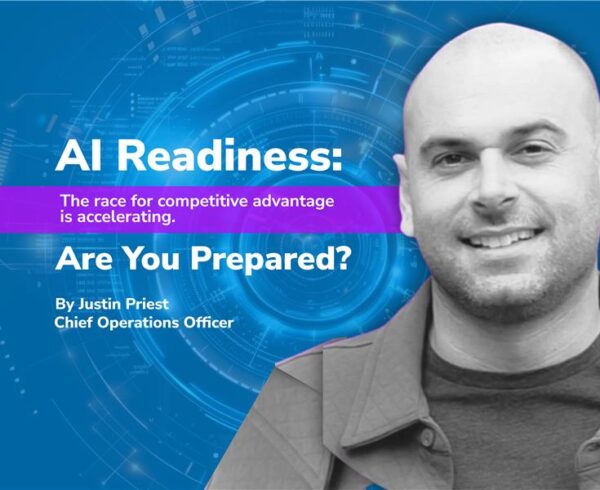The landscape of work in the tech industry has never been more complex or more hotly debated. Over the years that I have been in IT staffing and solutions, I’ve seen companies swing from rigid office-based structures to full-fledged remote teams, and now, many are trying to find a middle ground.
Lately, in my conversations with CIOs, CTOs, and hiring managers, one theme keeps coming up: What is the right balance between remote, hybrid, and in-person work? There’s no one-size-fits-all answer, but the data and real-world experiences of tech companies tell a fascinating story.
THE REMOTE WORK BOOM
When tech firms shifted to remote work practically overnight during the pandemic, many were skeptical. Could teams remain productive? Would collaboration suffer? But the numbers spoke for themselves.
Nearly 68% of tech employees now work primarily remotely, and that share has remained steady over time. At this point, it’s not just a trend—it’s how the industry works now. The fact that these numbers haven’t changed much tells us that remote work has settled into its place. It’s no longer a stopgap solution or an experiment; it’s just how a huge portion of tech operates.
And for many companies, it’s been a game-changer. I hear it all the time from our clients. Remote work has completely changed how they hire. One CIO from a mid-size software company in Austin put it best:
“We used to be locked into hiring within a 50-mile radius. Now, we can hire a cybersecurity specialist in Seattle, a DevOps engineer in Denver, and a Data Scientist in Miami—all for the same team. That was unthinkable before.”
Remote work has opened access to top-tier talent, but it’s not without challenges. Some leaders worry about culture and connection taking a hit when teams are scattered across time zones. And then there’s the elephant in the room: career growth. Are remote workers at a disadvantage when it comes to promotions and leadership opportunities? That’s a question a lot of companies are still trying to answer.
HYBRID WORK: THE BEST OF BOTH WORLDS?
If remote work has been a game-changer, hybrid work is quickly becoming the new standard in tech. Companies are recognizing that while full-time remote work has its advantages, bringing employees together in person, at least occasionally can foster collaboration, innovation, and stronger team connections.
Right now, 79% of tech firms now offer hybrid work models, giving employees the flexibility to choose how often they come into the office. Meanwhile, only 3% of tech companies require full-time office attendance, according to Business Insider. On paper, hybrid work seems like the perfect compromise. It offers the freedom of remote work and the in-person collaboration many companies still value.
But implementing hybrid work successfully isn’t always easy. Many companies have set office attendance policies, like requiring employees to come in three days a week but getting people to actually show up consistently is another story. Businesses have tried everything from catered lunches and happy hours to commuter benefits, but attendance can still be spotty.
What’s clear is that employees see hybrid work as a major perk. In fact, it’s valued so highly that workers equate it to an 8% salary increase. That’s something hiring managers can’t ignore because if your company isn’t offering hybrid flexibility, chances are, your competitors are. And they might just be attracting your best talent because of it.
IN-PERSON WORK MAKING A COMEBACK
Despite all the benefits of remote and hybrid models, some companies, especially tech giants, are making a strong push to bring employees back to the office.
In cities like New York, office attendance has climbed back to 86.2% of pre-pandemic levels according to the NY Post, signaling that for some industries, in-person work is still the expectation. Many leaders believe that no matter how advanced remote collaboration tools become, there’s no real substitute for face-to-face interaction.
Amazon is one of the biggest names leading the return-to-office charge, requiring employees to come in at least three days a week. Their reasoning? They believe in-person engagement is essential for collaboration, mentorship, and long-term innovation.
That being said, not everyone is convinced. 77% of remote workers report being more productive at home which raises the question—if employees are getting more done remotely, is mandatory office time really necessary?
It’s a debate that isn’t going away anytime soon. While some companies are betting on in-office work as the key to driving innovation, others are doubling down on flexibility, knowing that many employees see remote and hybrid options as a make-or-break factor in where they choose to work.
THE FUTURE: WHAT’S THE BEST MODEL FOR TECH?
So, where does this leave us?
If there’s one thing that’s clear from what I’m hearing in the industry, it’s that tech companies are leaning toward a flexible but intentional approach. The ones forcing strict office policies are finding it harder to attract talent, while those going fully remote are running into challenges with culture and collaboration. The sweet spot seems to be somewhere in the middle. Giving employees flexibility while still creating opportunities for in-person connection when it really counts.
Companies that adapt to these preferences will have a competitive edge. One of our clients summed it up best:
“We’re not married to one model. We’re constantly reevaluating. The key is listening to employees, keeping a pulse on productivity, and staying flexible.”
The tech industry has always been about innovation—and that includes reimagining how we work.






